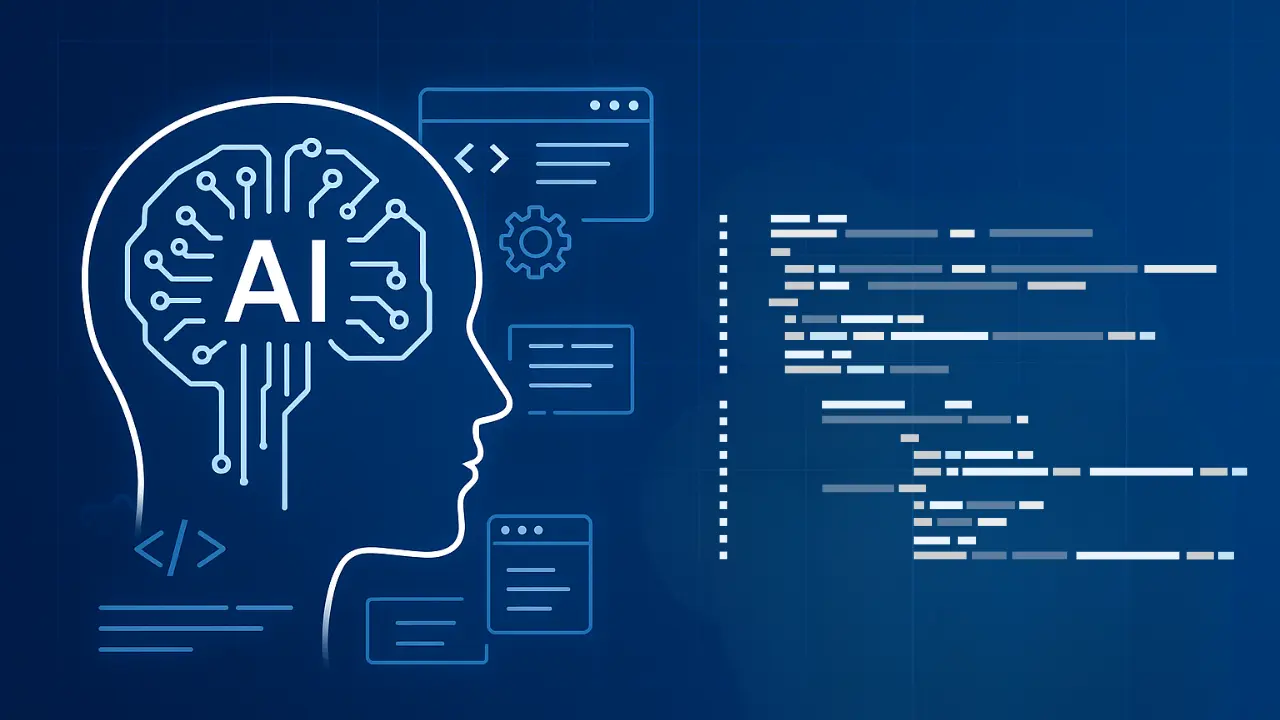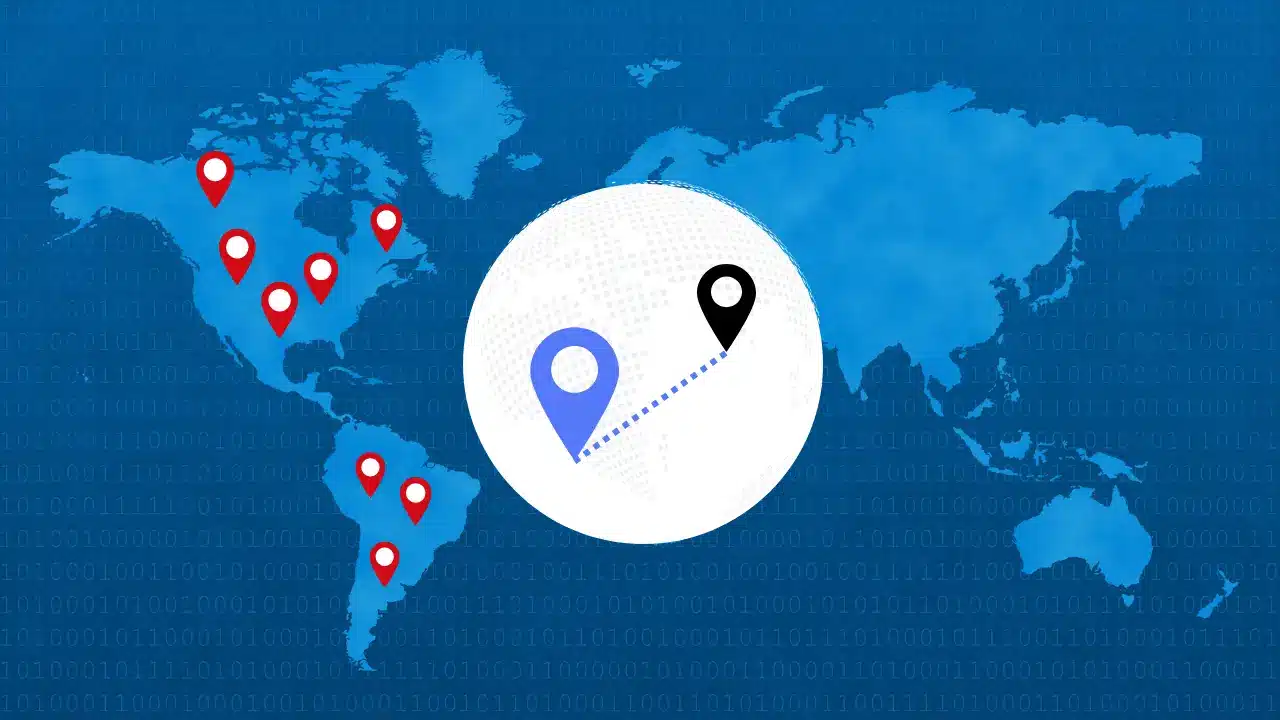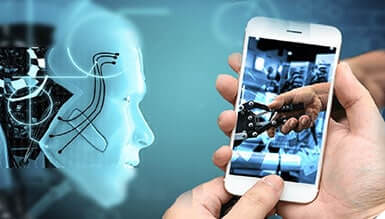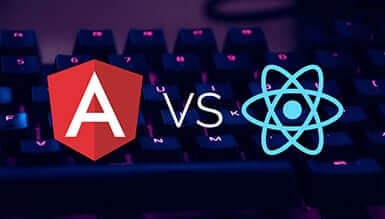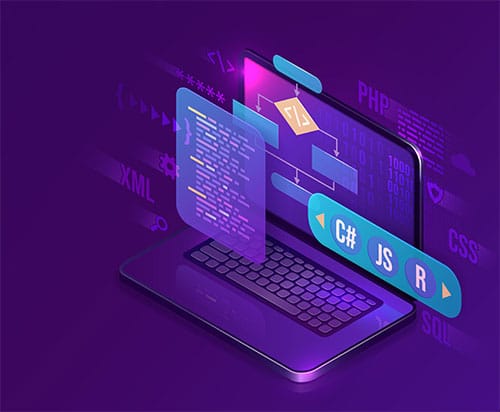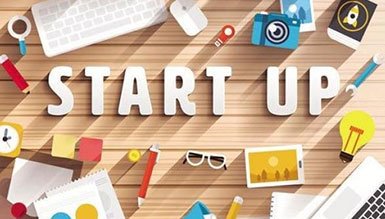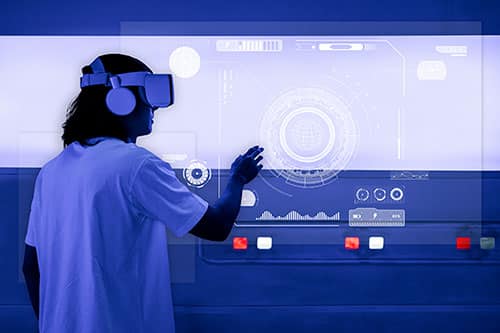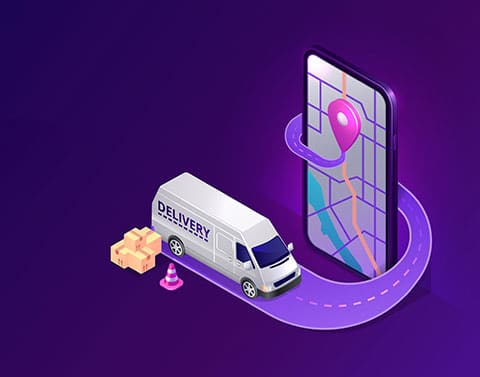The Internet of Things has revolutionized the way we interact with the world around us. From smarter homes to intelligent industrial systems, IoT technology has transformed our lives in countless ways. Harnessing the power of IoT application development can lead to more efficient and effective operations, improved safety and security, and enhanced customer experiences. By collecting and analyzing data in real time, organizations can optimize resources and streamline processes, leading to higher productivity and profitability.
Overview of IOT
It refers to the interconnection of different devices and objects using the internet to collect and share data. It represents a significant shift in the way we interact with technology and the world around us. Some advantages of IOT include increased efficiency and automation, improved communication and collaboration, and enhanced safety. IOT has the power to revolutionize industries such as healthcare, agriculture, manufacturing, and transportation, etc., enabling us to not only gather and analyze data in real-time but also informed decisions based on it.
Importance of IoT Application Development in Today’s World
1. IoT Impact on Healthcare Sector
IoT has the potential to revolutionize healthcare, with remote patient monitoring and telemedicine being two notable examples. Healthcare practitioners can use connected devices to monitor patients’ health in real-time, allowing for early intervention and personalized care. IoT devices like wearables, sensors, and monitors have made it easier for healthcare professionals to collect real-time data.
2. IoT in the Education Sector
IoT has the potential to revolutionize the education sector, providing students and educators with new tools and resources to enhance learning. Additionally, IoT-enabled classrooms can offer a more interactive and engaging learning environment, with smart boards that allow for real-time collaboration. By integrating IoT into education, schools can unlock new possibilities for teaching and learning, empowering students to achieve their full potential.
3. IoT in the Manufacturing Sector
IoT systems transform the way manufacturing firms operate by providing valuable insights into the production processes, reducing downtime, and optimizing supply chains. By connecting machines, devices, and sensors, IoT systems can monitor the health of equipment, predict maintenance needs, and automate production lines. IoT systems also enable real-time tracking of products during the manufacturing process, ensuring that they meet quality standards and avoiding costly recalls.
4. IoT in the Retail and Distribution Sector
With the help of IoT, retailers can analyze customer data to predict future demand and adjust prices, accordingly, thus creating personalized shopping experiences. IoT devices also facilitate the tracking of products throughout the supply chain, leading to better operational efficiency and improved customer satisfaction. This technology has made it easier for retailers to monitor inventory levels and ensure that shelves are always stocked with the necessary items.
What Are the Key Components of an IoT-Enabled App?
The Internet of Things ecosystem has changed the way we interact with physical objects daily. Companies are creating IoT-enabled apps to interact with various smart devices in our homes, offices, and even our cars. To create a successful IoT-enabled app, developers must consider various key components.
These components include device connectivity, data collection, and data processing. Device connectivity is one of the critical components of an IoT-enabled app. The app should be able to establish a secure and reliable connection with various smart devices such as sensors, cameras, and appliances. This requires developers to work with different protocols and communication technologies such as Wi-Fi, Bluetooth, and cellular networks. Additionally, developers need to ensure that the app can communicate with devices that use different technologies and operating systems.
Data collection and processing are also important components of IoT-enabled apps. The app should be able to connect data from multiple devices and sensors, store it, and analyze it in real time. To build an efficient data processing system, developers need to leverage big data technologies and cloud computing. With the right data processing system, the app will be able to provide insights and recommendations to users based on the collected data.
A successful IoT-enabled app should be able to establish a secure connection with smart devices, collect data in real time, and process it efficiently. With the right components, IoT-enabled apps can help users to automate tasks, optimize energy consumption, and improve the overall quality of life. Developers need to prioritize these components to create an innovative and functional IoT-enabled app.
Popular Sensors Used in Building IoT Applications
Some popular types of sensors used in building IoT applications include temperature sensors, humidity sensors, motion sensors, pressure sensors, light sensors, gas sensors, and biometric sensors, among others.
- Temperature and humidity sensors are commonly used in temperature-controlled environments such as greenhouses, cold storage, and server rooms.
- Motion sensors are used to detect movement and can be found in security systems and smart homes.
- Pressure sensors are used in industrial settings to measure pressure in gas, liquid, and air pressure systems.
- Light sensors can be used in solar lighting to turn on/off streetlights according to weather conditions.
- Gas sensors detect harmful gases such as CO and CO2 in confined spaces and signal an alarm.
- Biometric sensors are used for security purposes such as for unlocking smartphones using fingerprints or facial recognition.
- Accelerator sensors are there to measure vibration, shock, displacement, velocity, inclination, etc.
The possibilities of IoT applications built with sensors are endless, and businesses need to choose the sensor that best suits their needs.
What are some Popular IoT platforms for Building IoT-Enabled Apps?
IoT Platforms have emerged as a meaningful change in building IOT-enabled apps. An IOT platform is a comprehensive structure that enables the communication between connected devices, data collection, analysis, and management of that data which is crucial for developing IoT applications. These platforms provide end-to-end solutions that simplify the development and deployment of IoT applications while also providing key features such as device management, security, analytics, and cloud computing.
Here are three types of IOT platforms.
IoT Connectivity Platforms. An IoT Connectivity Platform is used to manage and monitor the communication protocols that connect devices across Wi-Fi, Bluetooth, and mobile internet.
1. IoT Device Management Platforms:
These platforms are comprehensive tools that enable organizations to manage IoT devices more efficiently. These platforms offer several features such as device monitoring, data analysis, firmware updates, and security management. The purpose of these applications is to simplify and automate device management processes.
2. IoT Application Enablement Platforms
These are software solutions that allow the management and development of IOT (Internet of Things) applications and services. These platforms provide tools for building, integrating, and deploying IoT solutions, making it easier for developers to create and manage complex IoT applications. They offer features such as data visualization, analytics, device management, and API (Application Programming Interfaces) for connecting devices and integrating with other systems.
3. IoT Analytics Platforms
IoT analytics platforms are software programs that collect and analyze data from IoT devices and sensors. These platforms are designed to generate information from the massive amounts of data generated by IoT devices by analyzing patterns, correlations, and trends in data. The insights generated by these platforms can help organizations understand how their devices are functioning, identify areas for improvement, and make smarter decisions. They can also help detect potential issues before they cause problems.
How can I Ensure the Security of my IoT-enabled app?
Securing an IoT-enabled app can be challenging, but several steps can be taken to ensure its security.
- Firstly, conducting a thorough security audit is the app is essential to identifying vulnerabilities.
- Secondly, implementing encryption protocols and strong authentication measures such as multi-factor authentication can help protect against unauthorized access.
- Thirdly, regularly updating the app and firmware is also necessary to patch any newly discovered vulnerabilities.
How can I Test and Debug my IoT-enabled app for Reliability and Performance?
The Internet of Things (IoT) has presented many innovative app development opportunities, ranging from smart homes and wearable technologies to industrial automation and city infrastructures. However, building reliable and high-performance IoT apps can be a daunting task given the complex and interconnected nature of IoT devices. Debugging IoT apps for reliability and performance is, therefore, a critical step toward achieving successful implementations.
One of the primary strategies that I can adopt to improve the reliability and performance of IoT-enabled apps is extensive testing. Testing can help to identify and isolate potential bugs, vulnerabilities, and flaws in the system to enable developers to fix them before deployment. This can involve testing the app on different hardware and software platforms and simulating real-world scenarios to observe how the app responds to varying conditions.
Additionally, incorporating practices such as code reviews, continuous integration, and automated testing in the development process can keep the app’s codebase clean and ensure that problems are caught early before they escalate into more significant issues. Through testing and adopting the best coding practices, I can ensure that my IoT-enabled apps are reliable and perform optimally.
What are Some Common Use Cases for IoT-Enabled Apps?
IoT-enabled apps, or applications that utilize the Internet of Things, have a wide variety of use cases across many different industries.
In this section, we discuss the top 2 industries that adopted IoT.
1. Healthcare:
One such use case is in healthcare. IoT devices can be used to track a patient’s vital signs and other health data in real time, allowing healthcare professionals to monitor the patient remotely and respond quickly in case of an emergency. This can be especially useful for patients with chronic conditions who require frequent monitoring, as it allows them to remain at home rather than being admitted to the hospital.
2. Manufacturing and Logistics:
Another use case for IoT-enabled apps is manufacturing and logistics. IoT devices can be used to track the movement and status of goods and materials throughout the supply chain, from production to delivery. This allows companies to optimize their operations and reduce waste by ensuring that products are delivered on time and in the correct condition. It also provides greater visibility into the supply chain, allowing companies to identify bottlenecks and areas for improvement.
Overall, the use cases for IoT-enabled apps are vast and varied, offering the potential for increased efficiency and productivity across many different industries.
Development Tools and Technologies for IoT-Enabled Apps
Different IoT platforms have their strengths and weaknesses. For instance, Arduino is ideal for building small-scale applications, while AWS (Amazon Web Services) IoT is suitable for large-scale industrial applications with complex requirements. Azure IoT provides excellent scalability, while Google Cloud IoT is ideal for building intelligent applications that leverage machine learning.
There are several IoT frameworks and platforms available for app developers, including Arduino, Raspberry Pi, AWS IoT, Azure IoT, and Google Cloud IoT. These platforms provide developers with pre-built tools, libraries, and frameworks that simplify the development process.
Moreover, programmers can use different programming languages for IoT app development, including C++, Java, Python, and JavaScript. Each language has its advantages and disadvantages.
Possible Challenges in IoT-Enabled App Development
Despite the promising future of IoT -enabled app development, there are several challenges that developers must overcome. These challenges include:
- Security: IoT devices are vulnerable to cyber threats, and developers must implement robust security measures to protect against attacks.
- Interoperability: IoT devices and platforms use different communication protocols, making it challenging to achieve interoperability between devices.
- Complexity: Developing an IoT-enabled app requires specialized skills and knowledge, which can be a challenge for inexperienced developers.
With the right development platform, programming language, operating system, data analytics, and security tools, developers can create innovative applications that can revolutionize the way we live and work. Keeping up with the latest trends and challenges in IoT-enabled app development will be crucial for developers to stay ahead of the competition and create successful applications.
Also Read:
Upcoming Trends in IoT-enabled App Development
The future of IoT-enabled app development looks bright, with several upcoming trends that will shape the IoT landscape. These trends include:
- Edge Computing: Edge computing is the concept of processing data locally on IoT devices, rather than sending it to the cloud. This approach reduces latency, conserves bandwidth, and enables real-time processing.
- 5G Connectivity: 5G connectivity will enable faster data transfer rates and lower latency, making it ideal for IoT devices that require high-speed communication.
- Machine Learning: Machine learning algorithms will help IoT devices to learn from their environment and adapt to changing conditions. This will enable IoT devices that require high-speed communication.
Best Practices for Developing IoT-Enabled Apps
Developing IoT-enabled apps requires a precise understanding of the technology involved, the end user’s needs, and the data infrastructure. Therefore, it is essential to follow the best practices during the app development lifecycle.
1. Following agile and DevOps methodologies:
Agile and DevOps methodologies have become an essential part. Agile emphasizes ongoing communication, quick delivery, and feedback. DevOps is about collaboration between developers and operations teams, which makes it easier to identify and fix problems in real time. These two methodologies have significantly impacted today’s IoT app development process. Agile methodology provides developers with the flexibility to adapt to the evolving requirements of IoT projects, and DevOps allows for early identification and resolution of issues.
2. Collaborating with Cross-Functional Teams
Each team brings a specific set of skills and expertise to the project. which can be leveraged to create successful IoT applications. Collaboration between these teams is crucial, as it ensures that the user’s needs meet the required technical standards and is delivered on time and within budget. To collaborate effectively with functional teams, we need to work closely with each other and prioritize their work. Close collaboration promotes communication, transparency, and agile development, which are key components of a successful IoT application.
3. Implementing Continuous Integration and Deployment
Implementing CI (Continuous Integration) and CD (Continuous Delivery) (Continuous Delivery) in IoT-enabled app development is important for ensuring the high-quality and timely delivery of applications. CI ensures that each change made in the codebase is automatically tested and integrated into the main branch, allowing for early detection and resolution of coding issues.
4. Monitoring and Optimizing App Performance
Monitoring and optimizing IoT-enabled applications are critical to ensure smooth operations and user satisfaction. The first step is to establish key performance indicators and set up a monitoring device connectivity, data transfer speeds, and response times. Once it collects data, you can analyze it to identify areas for optimization. You can implement Code optimization to enhance application performance.
Keeping Up with the Latest IoT Trends and Innovations
Businesses and individuals need to stay abreast of the latest IoT trends and innovations. With IoT devices becoming increasingly ubiquitous, industries from healthcare to agriculture are being revolutionized by how sensors.
Whether it is exploring the potential of edge computing, embracing the possibilities of 5G networks, or leveraging AI-powered analytics, keeping up with the latest developments in IoT is essential to staying competitive in an ever-evolving digital world.
By staying informed and agile, businesses and individuals can harness the power of IoT to improve their operations. Businesses can enhance the user experience, and unlock new opportunities for growth and innovation.
How does JumpGrowth help in Building an IoT IoT-Enabled App?
JumpGrowth has experts having 20+ years of experience in providing App Development Services. We help you with digital transformation to reduce operating expenses and inefficiency. Our team consists of certified IoT application development experts. They can help you in building an outstanding application to grow your business. Contact us if you want to discuss your idea in detail.
Conclusion:
We hope this blog provides all your queries on how to make an IoT App. We also include the best practices that help you build the best IoT architecture for your next project. Also, by prioritizing user needs and preferences, we can create the best IoT- enabled apps that are intuitive, accessible, and user-friendly.
So, that the applications can help us increasing user engagement and satisfaction.
Ready to Harness the Power of IoT?
Discover how our expert Mobile App Development Team can bring your IoT-enabled app to life!
Frequently asked questions:
1. How to develop an IoT app to improve my business operations or customer experience?
An IoT application can improve business operations and customer experience. It provides real-time insights and analytics on a range of data points, such as customer behavior, and inventory levels. With IoT technology, businesses can operate more efficiently, reduce costs, and improve customer experience.
2. What are some examples of IoT-enabled applications?
- Smart homes use IoT to automate tasks like lighting and temperature control.
- Users can use smart healthcare monitors to track patients’ health and medications.
- Industries use IoT devices to monitor equipment and enable predictive maintenance.
3. How can I ensure security while creating IoT apps?
To ensure the security of IoT applications, it is necessary to follow security best practices:
- Implementing strong passwords
- Enabling two-factor authentication
- Regularly updating software and firmware
- Encrypting data in transit and at rest
- Establishing access controls
- Performing regular vulnerability assessments
4. What challenges should I expect when developing an IoT application?
The first challenge one can expect when developing an IoT app is the issue of interoperability. Another challenge that one may face when developing an IoT app is security and privacy.
Related Blogs:
 AptaCloud is your trusted Microsoft-certified partner, specializing in delivering a comprehensive range of cloud and infrastructure solutions tailored to meet your business needs. From Microsoft Azure and Office 365 to advanced infrastructure management services, we empower businesses with cutting-edge technology that ensures scalability, security, and operational efficiency. Our expertise extends to implementing, managing, and optimizing Microsoft services, enabling organizations to streamline their operations, enhance productivity, and reduce costs. At AptaCloud, we are committed to providing reliable, secure, and innovative solutions that help businesses thrive in the ever-evolving digital landscape.
AptaCloud is your trusted Microsoft-certified partner, specializing in delivering a comprehensive range of cloud and infrastructure solutions tailored to meet your business needs. From Microsoft Azure and Office 365 to advanced infrastructure management services, we empower businesses with cutting-edge technology that ensures scalability, security, and operational efficiency. Our expertise extends to implementing, managing, and optimizing Microsoft services, enabling organizations to streamline their operations, enhance productivity, and reduce costs. At AptaCloud, we are committed to providing reliable, secure, and innovative solutions that help businesses thrive in the ever-evolving digital landscape. AptaCloud is your trusted Microsoft-certified partner, specializing in delivering a comprehensive range of cloud and infrastructure solutions tailored to meet your business needs. From Microsoft Azure and Office 365 to advanced infrastructure management services, we empower businesses with cutting-edge technology that ensures scalability, security, and operational efficiency. Our expertise extends to implementing, managing, and optimizing Microsoft services, enabling organizations to streamline their operations, enhance productivity, and reduce costs. At AptaCloud, we are committed to providing reliable, secure, and innovative solutions that help businesses thrive in the ever-evolving digital landscape.
AptaCloud is your trusted Microsoft-certified partner, specializing in delivering a comprehensive range of cloud and infrastructure solutions tailored to meet your business needs. From Microsoft Azure and Office 365 to advanced infrastructure management services, we empower businesses with cutting-edge technology that ensures scalability, security, and operational efficiency. Our expertise extends to implementing, managing, and optimizing Microsoft services, enabling organizations to streamline their operations, enhance productivity, and reduce costs. At AptaCloud, we are committed to providing reliable, secure, and innovative solutions that help businesses thrive in the ever-evolving digital landscape.






